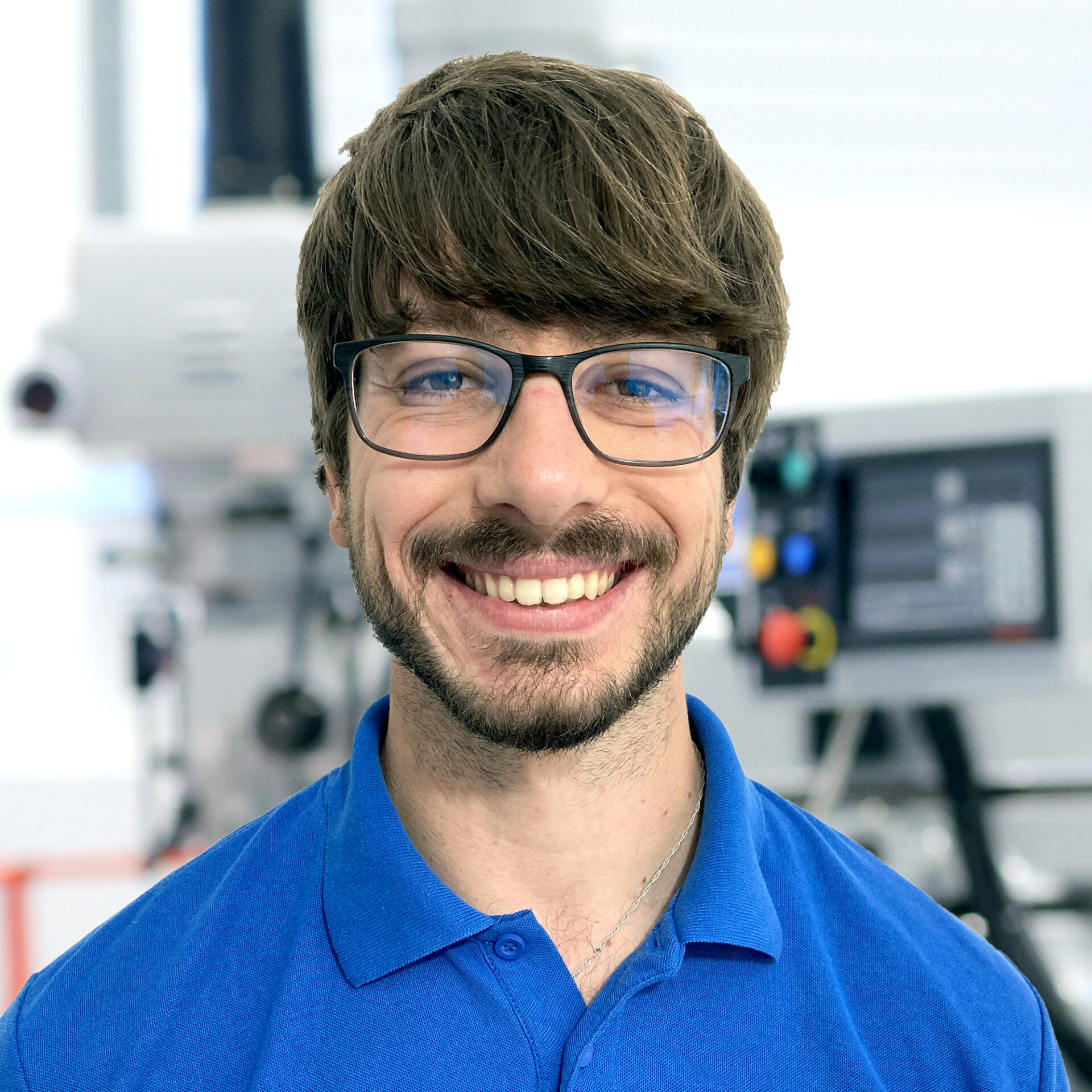Apprentice Case Study: Harry

After deciding on a career change, Harry used his apprenticeship to make his first steps into the engineering sector. He loves the variety of experience and skills his apprenticeship has provided. This has also helped him to understand the different areas within the sector, putting him in a strong position to shape the next phase of his learning journey.
Harry says his apprenticeship is the best decision he’s ever made, so we caught up with him to hear about why it’s been such a successful experience.
Why did you choose an apprenticeship?
I was 24 and working in an opticians, but I wanted to do something different. I had enjoyed engineering whilst studying for my GSCEs and A Levels, so I started investigating how to get into the industry and found out that an apprenticeship would help me to successfully change careers.
Did you have a particular career in mind when you made your decision? If so, what and why?
More practical roles give me a good sense of accomplishment at the end of the day, so I was thinking of becoming a mechanical engineer because it is a hands-on job. I also liked the idea of producing components through machining on lathes and mills.
Did you have an idea of what an apprenticeship would involve before you came to OAS?
Yes, I did – partly because I spoke to someone from the Science and Technology Facilities Council (STFC) who told me what to expect. I didn’t really know what it would be like to train at OAS though, as it was new programme and the centre hadn’t been open for long.
Learning at OAS was extremely enjoyable, and everyone was friendly and willing to help. If you had a problem, you could ask any of the staff and they would always go out of their way to help you.
What have you learnt at OAS?
The first year was excellent – we built a foundation of skills across various areas including machining (turning and milling), electrical engineering, electronics, maintenance and CAD design.
The second year is more theory based and focuses on mathematics and mechanical principles. OAS has really helped me to improve my knowledge and skills, as well as giving me much greater confidence in my abilities.
What sort of projects have you been/are you working on?
At the training centre, I have been completing mechanical principles assignments, alongside working on my project folder and presentation for this year. OAS set a deadline of just under a year to find a project, and then produce and manage the solution. The project needs to take into account timelines, material selection and reasoning, as well as justification for certain designs, and managing any unforeseen problems that might have occurred.
At STFC, I have been working on a project for the ‘Larmor’ instrument on the labs neutron beamline. This involved designing and making a holder for an ammonia cell that needed to be aligned on the XYZ stage. This was especially interesting because it was more of a technician role, and so required me to undertake a wide variety of tasks.
How has the apprenticeship programme been beneficial to you and your career?
My apprenticeship has been the best decision I have ever made. I thoroughly enjoy my job and look forward to going to work in the morning.
It has allowed me to develop and learn new skills as well as building my confidence. It has given me exposure to a variety of departments, which has helped me get a better understanding of the route I would like to take after I’ve completed my apprenticeship, whether this is a mechanical, technician or design role. This experience in particular has been so beneficial because it will help me to make an informed decision about where I want to work in the future.
What would you say are the benefits and what advice would you offer to those looking to apply to the OAS apprenticeship programme?
There are plenty of benefits to an apprenticeship. The main one for me is that I am being paid to learn, so at the end of the apprenticeship, not only will I have a job, I will also have avoided any debt.
For those looking to apply to the OAS apprenticeship programme, it will be one of the best choices you will make. You learn from experts who have been in the industry, so they know their stuff and understand what it’s really like to work in the job role.
If you are unsure, I’d say the important thing to remember is that as an OAS apprentice, you are learning practical skills and will have far more on-the-job experience compared to other educational routes in a few years’ time.
What has been your biggest achievement so far during your apprenticeship?
My biggest achievement, personally, has been learning to use the 3D CAD design software. It has so many useful applications, such as prototyping and testing an idea before you manufacture it.
At STFC, I am really proud to have been able to help build the ammonia cell holder on the ‘Larmor’ instrument. It is extremely satisfying to know you have made something that is used in experiments by the beamline scientists and users.
What are your future career plans?
My current plan is to complete my apprenticeship and further my education whilst working in one of the departments’ onsite at STFC. There is an opportunity to complete a degree whilst working and the organisation will invest in this for you, providing you work hard and prove yourself.
Would you recommend apprenticeships to others?
Definitely. You learn practical skills as well as the theory to back it up and you get to work at facilities with cutting edge technology, providing you with an excellent education. My apprenticeship is the best choice I have made in my career.